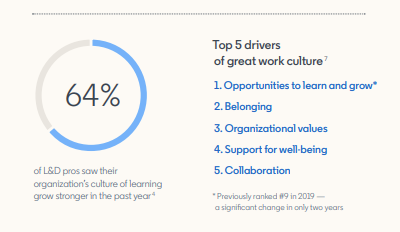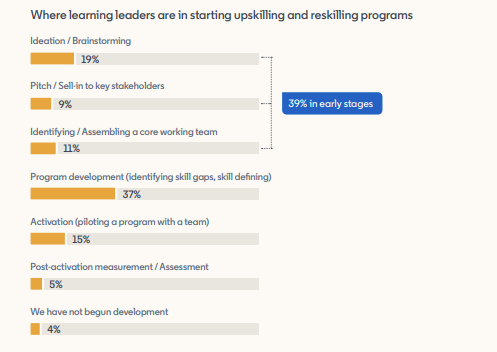Professional development leaders are spread too thin, survey says
Here’s how comms pros can support their L&D colleagues in designing and evaluating more efficient upskilling programs.

Comms pros know that offering their employees upskilling programs is a tried-and-true way to increase worker retention and improve company culture. A recent survey shows that nearly 80% of employees would be more likely to stay at a company that offered data literacy training.
But if the employees leading the learning and development (L&D) charge at your organization are spread too thin, you risk hurting key internal programs like upskilling, as well as diversity, equity and inclusion (DE&I) strategy and implicit bias trainings.
L&D pros are under pressure to perform
As defined by the Association for Talent Development, L&D is “a function within an organization that is responsible for empowering employees’ growth and developing their knowledge, skills, and capabilities to drive better business performance.”
A new report from LinkedIn shows that as L&D pros are taking on more projects than ever, they have less time to spend on their own professional development. According to LinkedIn, L&D leaders spent 23% less time learning than their peers did in 2021, and 35% less time than their HR colleagues.
And L&D pros are feeling pressure to equip employees with the skills they need to succeed: 49% of respondents said their executives were concerned that employees don’t have the right skills to execute business strategies.

How comms pros can help — and why they should care
Here’s the deal—the upskillers need upskilling. If L&D pros don’t have the time and bandwidth to dedicate to their own professional development, crucial communications goals will likely suffer.
It’s in the best interest of corporate communicators to use existing internal resources to support their L&D colleagues. Assisting L&D leaders with their strategy is a win-win: Collaboration builds trust and goodwill, and a strong L&D program helps to meet key comms goals like retention, employee engagement and DE&I metrics.
For example, comms pros can partner with L&D on internal surveys to dissect employees’ upskilling and development preferences. This can help L&D pros spend more time on topics that are important to workers, rather than trying to cover a wide swath of focus areas.
Measurement is another area in which corporate communicators can offer guidance. Just 5% of L&D pros said they had made it to a point where they were ready to assess the efficacy of their upskilling and reskilling programs — a process that is comparable to measuring the efficacy of internal messaging campaigns.

It’s also important as comms pros to make sure that L&D leaders have the time and opportunities to learn themselves. This could take the form of an L&D retreat, lunch-and-learns, or providing access to L&D-specific development programs that leaders can complete at their own pace.
Comms pros, what is your team doing to help your L&D colleagues meet their goals?







